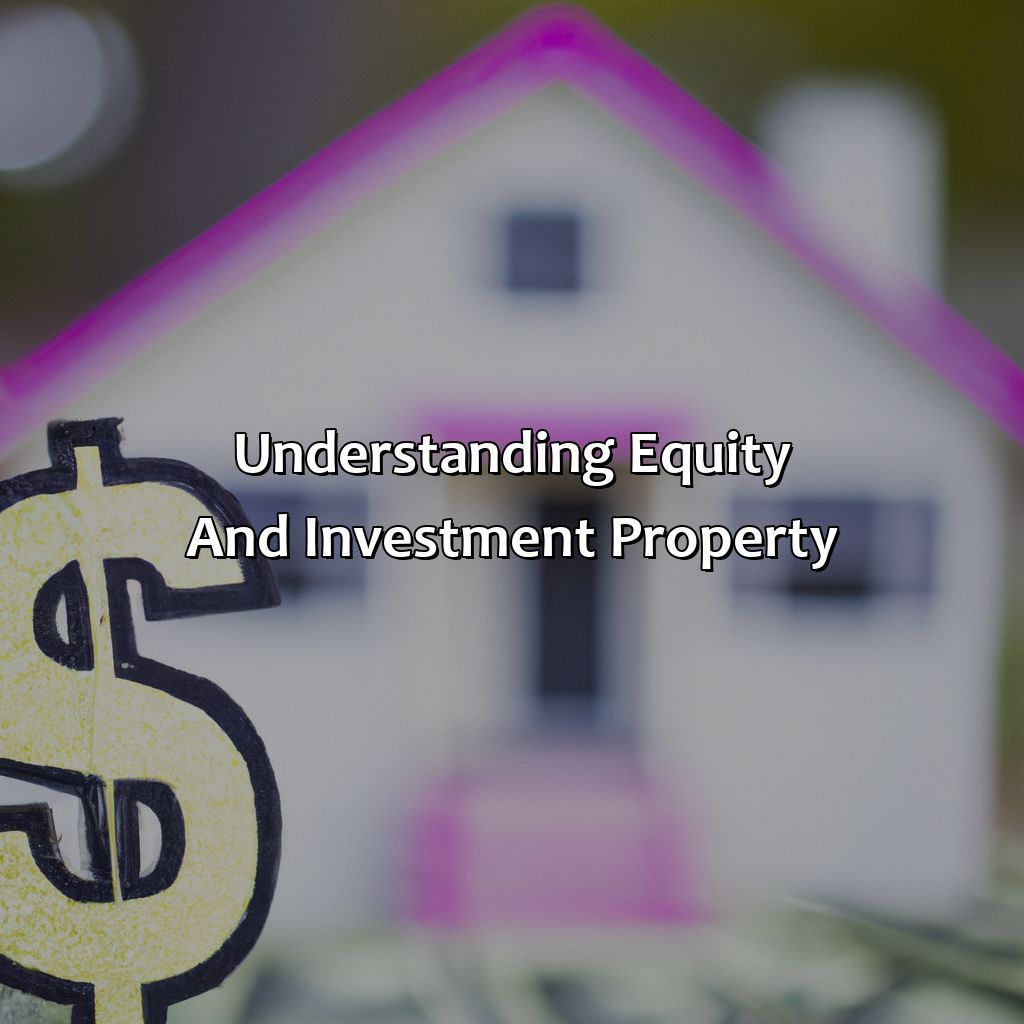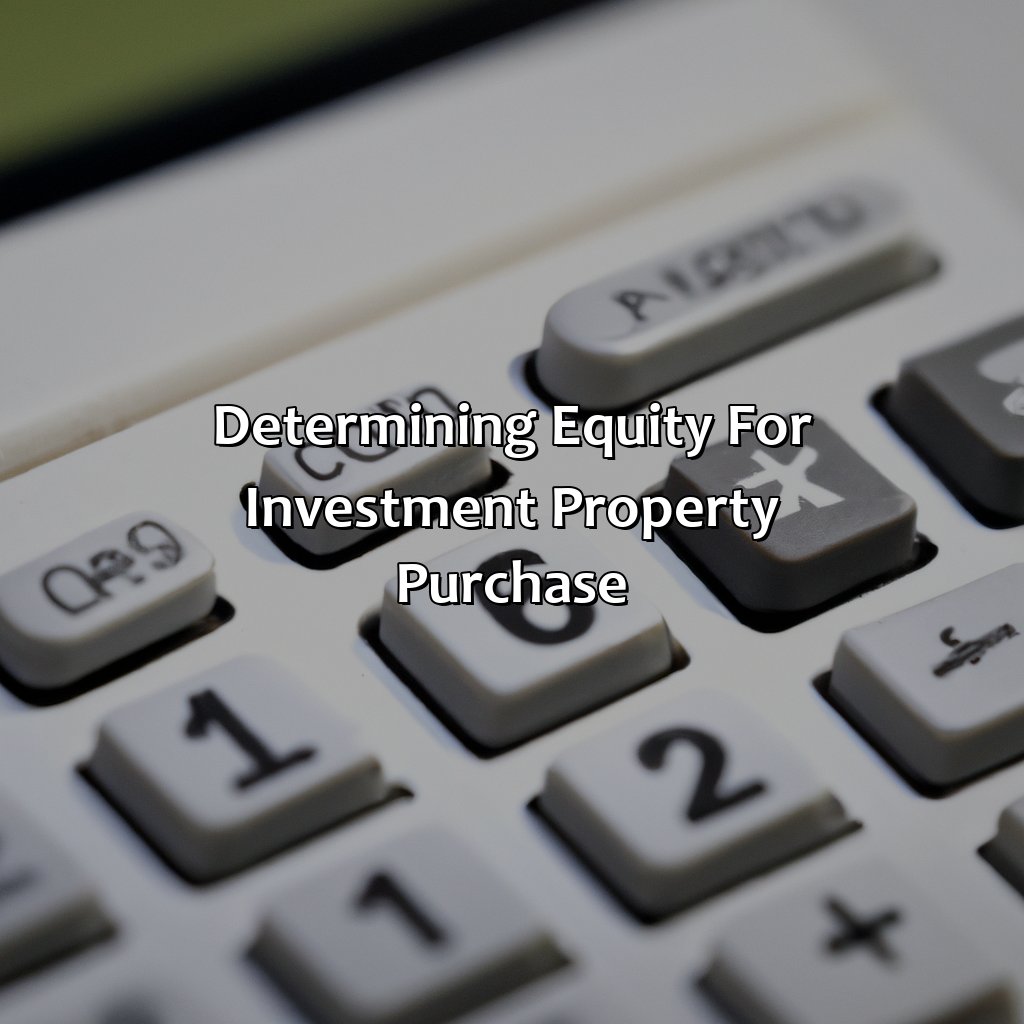How To Use Equity To Buy An Investment Property?
Key takeaway:
- Understanding equity is essential for purchasing an investment property: Equity is the difference between the market value of your property and the amount you owe on your mortgage. This can be used as collateral for a loan to purchase an investment property.
- Identifying available equity is crucial for determining investment property purchase options: It’s important to calculate your loan-to-value ratio (LVR) to determine how much equity you have available to use. This will allow you to explore different strategies for using your equity to purchase an investment property.
- There are several strategies for using equity to purchase investment property: These include equity release options, refinancing, and line of credit loans. It’s important to weigh the risks and benefits of each option before making a decision.
You want to invest in property but don’t have the funds? Equity can be the answer. Uncover how you can use the equity of your existing property to access funds for your next investment purchase and get closer to your financial goal.
Understanding Equity and Investment Property
Investment property is a significant financial asset that can generate fruitful returns. Understanding Equity and Investment Property is crucial to comprehend how you can use equity to buy an investment property. Equity is the difference between the market value of your property and the outstanding mortgage balance. By leveraging equity, you can avail a second mortgage to purchase another property, expand your portfolio, and diversify your investments. However, it’s essential to consult with a financial advisor and calculate the equity and investment risks before proceeding.
Once you have consulted with a financial advisor and calculated the risks, you may use equity to buy an investment property. You may apply for a home equity loan or a Home Equity Line of Credit(HELOC) on your first property and use the funds to purchase an investment property. Alternatively, you may refinance your first property and cash out the equity to buy an investment property. Ensure that your investment property’s expected rental income exceeds the mortgage payment and other related costs, such as maintenance, property taxes, and insurance. By using equity to buy an investment property, you can expand your investment portfolio and generate passive income.
Using your first property’s equity is an excellent way to start investing in real estate, but it’s essential to evaluate your risk tolerance and financial goals before taking the leap. Always ensure that you have a significant buffer for unexpected expenses and rental income shortfalls.
According to Forbes, “Demand for investment property in the US increased by 50% from the second half of 2020 to the first half of 2021 due to low-interest rates and increasing house prices.”

Image credits: retiregenz.com by James Jones
Determining Equity for Investment Property Purchase
Uncovering equity for purchasing an investment property? Easy! First, locate available equity. That’s the financial value you can use to buy the property. Second, check the Loan-to-Value Ratio (LVR). This will tell you the property’s value versus the amount of debt on it. Let’s delve into these two topics in more detail.

Image credits: retiregenz.com by David Woodhock
Identify Available Equity
The process of determining the equity available for investment property purchase involves evaluating the monetary value of assets owned by an investor, then subtracting all existing liabilities. This calculation achieves a value representing the amount an investor may potentially borrow against their property. The existing equity can be used to secure financing, acquire new properties or renovate existing ones.
Using equity as leverage for an investment property is one way that real estate investors can fund new projects while minimizing out-of-pocket costs. To begin the process, it’s important to understand that not all equity will be readily available for use in purchasing additional properties. Investors must assess their current financial situation, market values and existing debts to determine how much usable equity exists.
Some possible strategies to identify available equity include:
- Maintaining accurate records of all assets owned by an investor
- Staying current on mortgage payments
- Obtaining regular market valuations for your properties
It might also be necessary to reduce outstanding debt in preparation for leveraging equity.
In practice, leveraging home equity has been a popular strategy among real estate investors seeking low-cost funds. Homeowners have historically borrowed against the value of real estate to secure investments in business ventures, real estate purchases, home improvement projects and even higher education costs.
Overall, it is vital for investors considering investment properties to evaluate their financial situation with care and with depth – accurately assessing liquid assets owned currently alongside past trends in order to give them the best footing going forward with any investments they are considering (not just those specific to real estate).
Don’t worry about calculating your LVR, just tell your banker to use a magic eight ball instead.
Calculate Loan-to-Value Ratio (LVR)
To determine the amount of equity required for an investment property purchase, understanding the loan-to-value ratio (LVR) is crucial. LVR is a financial metric that expresses the percentage of the loan amount compared to the property’s value.
Follow these three steps to calculate the LVR:
- Determine The value of your property: Use an appraiser or research recent sales for similar properties nearby.
- Calculate Total Loan Amount: Add all registered charges such as principal, interest and any ongoing fees together.
- Divide Total Amount By Property Value: The resulting number gives you a percentage – which is your LVR.
It is essential to remember that lenders may have different criteria for determining an acceptable LVR. Most lenders require a maximum LVR of 80%, which not only provides assurance on their investment but also presents lesser risk for borrowers.
To reduce risk, consider reducing the total loan amount by paying down outstanding debts or finalizing any current loans. Additionally, improving your credit score can positively impact negotiated rates and additional borrowing capacity in future lending.
Equity’s like a superhero – it swoops in to save the day and fund your investment property dreams.
Strategies for using Equity to Purchase Investment Property
Do you want to buy an investment property using equity? This section offers a solution. We’ll explore three strategies: Equity Release Option, Refinancing, and Line of Credit Loan. Learn which one is right for you to make an informed decision.

Image credits: retiregenz.com by Harry Arnold
Equity Release Option
Utilizing the Property’s Equity for Investing
Investment property purchase can be made easier by tapping into your existing property’s equity. It is known as utilizing the property’s equity for investing purposes. In simple words, it means borrowing money from lenders against the increased value of an owned property.
The equity release option is a popular way to raise money while providing homeowners with the flexibility to remain in their home. Homeowners can utilize this money to buy a rental property or an investment property.
Moreover, when considering this option, one must remember that there are expenses involved such as legal fees, survey costs, lender fees and more.
A real estate agent shared that Mr. and Mrs. Smith were struggling to save up for buying another investment property. But they had already paid 50% of their mortgage on their current house. The real estate agent suggested that they should avail of an equity release option against their current house and utilize those funds to purchase an investment property. After considering all the factors, Mr. and Mrs. Smith followed through with this plan and were able to secure an investment property without difficulty.
Refinancing: Where you exchange one problem (a high interest rate) for another problem (a longer loan term).
Refinancing
One way to grow your property portfolio is by refinancing your existing assets. When you refinance, you replace your existing mortgage with a new one, and the process allows you to tap into your property’s equity. This action enables you to get cash out of your property and use it as a down payment or even financial assurance for the investment property’s purchase.
By refinancing the first investment property, this will help in accessing equity that could be used as collateral for financing an additional rental-property purchase. Using this strategy could enable you to acquire more properties than you initially thought possible.
When refinancing, consider choosing shorter repayment terms since they come with lower interest rates compared to long-term mortgages. It would also be best if you maintain a good credit score and have plenty of savings before exploring the possibility of tapping into your home’s equity for financing purposes.
Refinancing has been utilized by numerous real estate investors and has proven its effectiveness over time. Many have taken advantage of its benefits as a gateway to own more rental properties or expand their real estate portfolio.
Want to turn your home into a money-making machine? A line of credit loan can help you tap into the hidden gold mine of your equity.
Line of Credit Loan
A Flexible Financing Option: Utilizing Your Home’s Equity
Using the equity in your home to purchase investment property is a common strategy among savvy investors. One way to do this is through a flexible financing option called a line of credit loan, which allows you to borrow against your home’s equity when needed.
A line of credit loan gives you access to funds up to a predetermined limit, and interest is only charged on the amount borrowed, not the entire limit. This means that you can use what you need when you need it and only pay interest on that amount. Additionally, the interest paid on the loan may be tax-deductible if the funds are used for investment purposes.
It’s important to note that taking out a line of credit loan adds an additional lien against your property, which means that your home is collateral for the borrowing. It’s crucial to ensure that any investment property purchased with these funds has sound revenue potential and a solid exit strategy in case repayment becomes necessary.
Don’t miss out on using your home’s equity as a tool for building wealth through real estate investing. Consider exploring the option of a line of credit loan and speak with an experienced financial advisor or mortgage lender to discuss if it’s right for you.
Using equity to buy an investment property is like playing Russian Roulette, with the potential benefits as your lucky bullet and the risks as all the other chambers.
Risks and Benefits of Using Equity for Investment Property Purchase
To know the ups and downs of tapping equity for investment property purchase, we will go into more detail. Equity can give you money for the investment without selling off possessions. But it has its own risks. We will examine the two topics, Risks and Benefits, to give you a complete understanding.

Image credits: retiregenz.com by Yuval Arnold
Risks
Potential Perils of Utilizing Equity for Investment Property Acquisition
Homeowners can leverage the equity in their home to purchase an investment property, but this comes with risks.
- If the investment proves unsuccessful, the homeowner could lose both their current and new properties.
- Using equity as a down payment may result in higher mortgage payments, reducing monthly cash flow.
Additionally, fluctuating interest rates could lead to increased mortgage payments and financial strain for the homeowner. In case of unexpected expenses or loss of tenants, there may not be enough liquidity to cover these costs. Therefore, thorough research and financial planning are vital before using home equity for investment purposes.
A report by Attom Data Solutions confirms that approximately 11% of homeowners who used their homes’ equity to buy another property risk losing both assets due to foreclosure.
Buying an investment property with equity means the potential to earn big bucks, but it also means your neighbor’s cat might become the new landlord.
Benefits
Equity Advantages for Investment Property Acquisition
Investment properties offer several advantages for those looking to invest. Here are some of the key benefits:
- Generate cash flow: Investment properties can generate rental income, which covers mortgage payments, and turns into profitable cash flow.
- Build wealth: You gain equity as property values increase, giving you the flexibility to sell it later for a profit.
- Decrease risk: Equity on your current home limits the amount of loan needed to purchase an investment property, which lowers financial risk.
- Tax benefits: Owners who use rental properties as a source of income are eligible for tax breaks such as deductions for expenses related to the property’s upkeep.
- Portfolio diversification: Owning an investment property provides portfolio diversification and reduces reliance on volatile assets such as stocks.
Keep in mind that using equity for investment requires careful planning. Seek professional guidance on financing options, leverage risks, and long-term goals.
Convinced about investing with your home equity? Don’t wait! Conduct thorough market research, go through tax regulations, and consult a trusted adviser. Missing out on owning a successful rented asset is not something you would want to regret in the future.
Five Facts About Using Equity to Buy an Investment Property:
Equity can be defined as the difference between the current market value and the outstanding mortgage on a property. (Source: Forbes)
Using equity to buy an investment property involves taking out a home equity loan or line of credit on your primary residence. (Source: The Balance)
Homeowners can typically borrow up to 80-90% of their home’s equity to use towards the purchase of an investment property. (Source: Investopedia)
Using equity to purchase an investment property can provide additional income streams through rental income and appreciation in property value. (Source: The Motley Fool)
It is important to carefully consider the risks and potential rewards of using equity to buy an investment property before making any decisions. (Source: SmartAsset)
FAQs about How To Use Equity To Buy An Investment Property?
What is equity and how can it be used to buy an investment property?
Equity refers to the difference between the current market value of a property and the amount still owed on its mortgage. It can be used as a down payment or collateral for a loan to buy an investment property.
How much equity do I need to buy an investment property?
Your lender may require a minimum of 20% equity in your current property before considering it as collateral for a loan to buy an investment property. However, the amount of equity needed ultimately depends on the lender and the investment property you’re interested in.
Can I use equity from multiple properties to buy an investment property?
Yes, you can use equity from multiple properties to buy an investment property. However, the lender will consider the total amount of equity available and may require a higher down payment or offer a lower loan-to-value ratio.
What types of loans can I use to buy an investment property with my equity?
There are several loan options available, including cash-out refinance, home equity loan, HELOC (home equity line of credit), and investment property mortgage. Each option has its own terms and requirements, so it’s important to do your research and consult with a lender to determine the best fit for your needs.
What are the benefits of using equity to buy an investment property?
Using equity to buy an investment property can provide access to funds without tapping into savings or incurring debt on credit cards. Additionally, using home equity for a real estate investment can potentially provide a higher return on investment than other options.
What are the risks of using equity to buy an investment property?
Using equity to buy an investment property carries risks, such as potentially losing access to your equity if the investment doesn’t perform as expected and negatively affects your property’s value. Additionally, if you default on the loan, you could face foreclosure on your properties with equity used as collateral. It’s important to carefully consider the risks before leveraging equity for an investment property.
 Checkout this IRS Loophole
Checkout this IRS Loophole 
